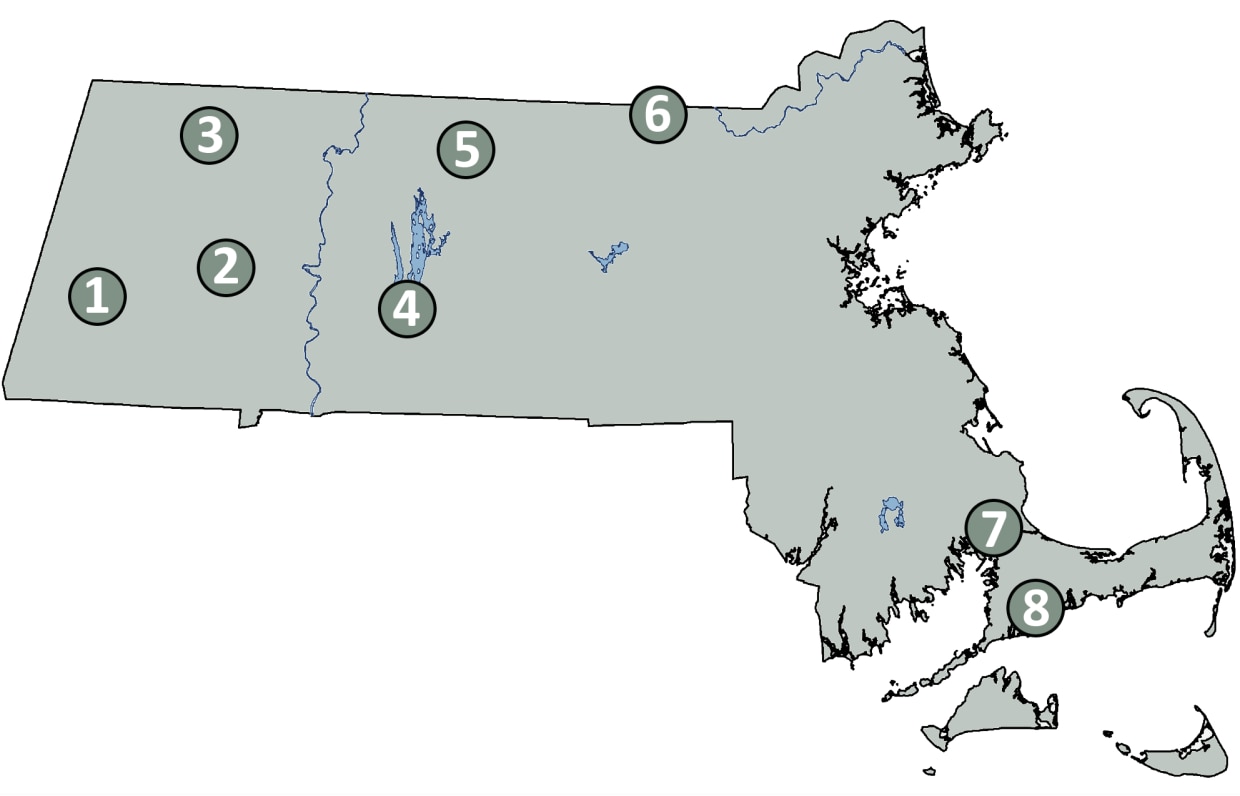Find a catch-and-release area
You may only use artificial lures in catch-and-release areas. You may not use bait. Some areas have additional restrictions.
Housatonic River
Special regulations: no fishing from June 15–Aug. 31 within 100 feet of mouths of Beartown Brook, Goose Pond Brook, Hop Brook, and Mohawk Brook.
- Housatonic River upper section map: Route 20 bridge in Lee downstream to Willow Mill Dam
- Housatonic River lower section map: Glendale Dam downstream to the railroad bridge in Stockbridge.
Westfield River, East Branch
- Westfield River map: Chesterfield Gorge parking lot in Chesterfield to the gate north of the Corps of Engineers parking lot at Knightville in Huntington
Deerfield River
- Deerfield River upper section map: Fife Brook Dam to Hoosac Tunnel
- Deerfield River lower section map: Pelham Brook to the Mohawk Campground
Swift River
Special regulations: Fly fishing only from Winsor Dam to Rte. 9. Rte.9 to Cady Lane, catch-and-release/artificial lures only from July 1-Dec 31, fish harvest and bait allowed Jan.1-June 30
- Swift River map: Winsor Dam to Cady Lane
Millers River
- Millers River upper section map: Templeton/Athol railroad bridge to the first dam in Athol
- Millers River lower section map: From Wendell Road bridge in Orange to the breached dam in Erving center
Nissitissit River
Special regulations: Fly fishing only
- Nissitissit River map: New Hampshire border to the Prescott Street Bridge
Red Brook
- Red Brook map: Outlet of White Island Pond to the inlet of Buttermilk Bay
Quashnet River
- Quashnet River map: Catch-and-release sections: from the outlet of John’s Pond to the sign 0.1 mile below Route 28
Catch and landing tips
Help protect the fish in catch-and-release areas by following a few simple tips.
- When you fish, try not to let the fish struggle for too long.
- Set the hook in the fish’s mouth as soon as you get a bite so the fish doesn’t swallow it.
- Use a landing net to cut down on catch time and stop the fish from thrashing.
Handling and release tips
To safely return a fish to the water, you should:
- Wet your hands so you don’t harm the protective mucous on the fish
- Support the fish by the belly when you remove your hook and avoid touching its gills or eyes
- If the fish swallowed a hook: cut the line off as close to its mouth as possible
- If the fish is tired, hold it in the water in a swimming position and move it back and forth horizontally until it can swim.
